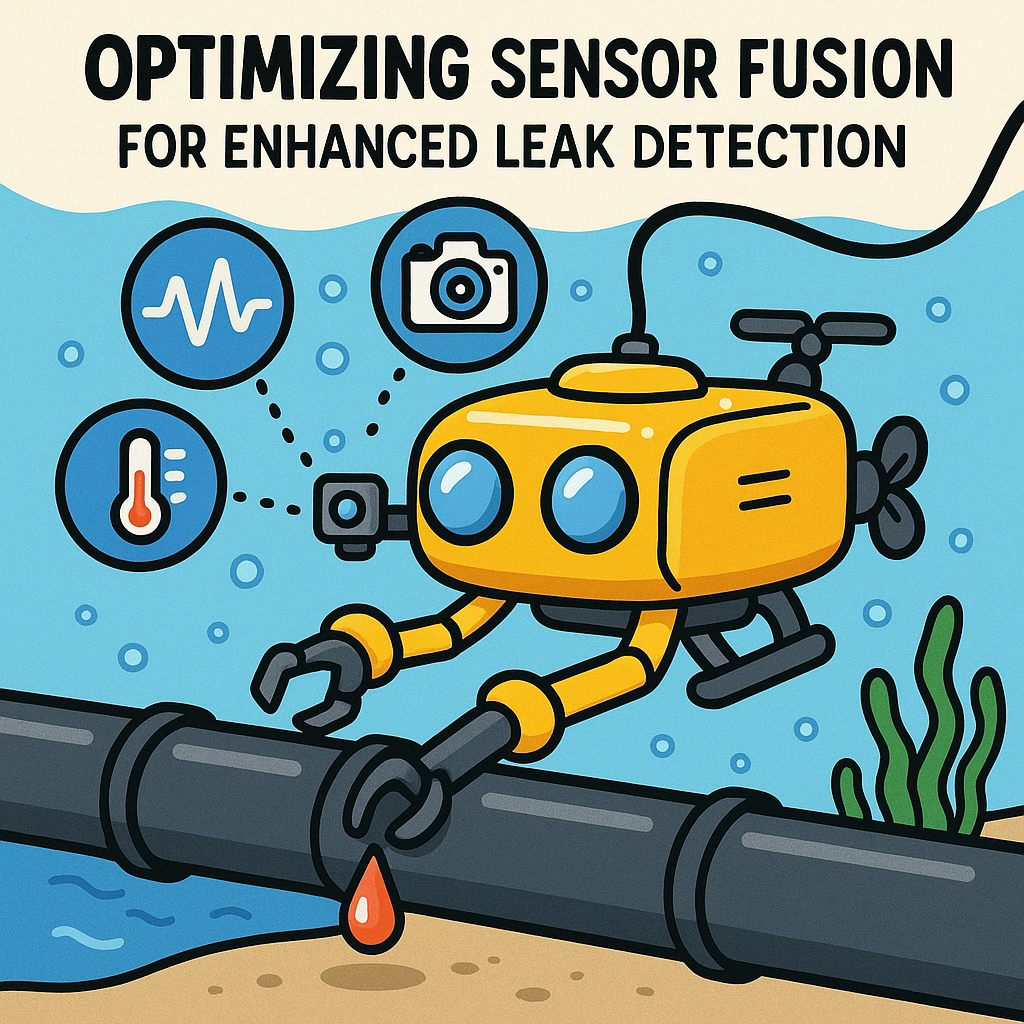Understanding the Context of Underwater Pipeline Inspection
Underwater pipeline inspection is a critical task, particularly for industries relying on oil and gas transport. The integrity of these pipelines is paramount, as leaks can lead to catastrophic environmental and economic consequences. To mitigate these risks, Remotely Operated Vehicles (ROVs) equipped with advanced sensor fusion algorithms have become the go-to solution for real-time monitoring and inspection.
The Role of Sensor Fusion in Leak Detection
Sensor fusion refers to the process of integrating data from multiple sensors to create a comprehensive understanding of the environment. In the context of underwater inspection, ROVs often utilize various modalities, including:
- Acoustic Sensors: Useful for detecting disturbances in water pressure that may indicate a leak.
- Optical Cameras: Provide high-resolution imagery for visual inspections of the pipeline structure.
- Infrared Sensors: Detect temperature differentials, which can signify leaks or structural anomalies.
- Sonar Systems: Offer a way to map the underwater terrain and identify potential risk zones.
The challenge lies in effectively fusing these diverse data types to enhance detection accuracy while minimizing false positives.
Challenges in Multimodal Data Integration
Integrating multimodal data presents several engineering challenges. Each sensor type operates under different physical principles and may have varying latency and noise characteristics. For instance, while optical cameras provide high-resolution images, they may be less effective in murky waters compared to sonar systems. Furthermore, the temporal alignment of data streams is crucial; discrepancies can lead to significant errors in detection algorithms.
Real-World Design Tradeoffs
When designing ROVs for pipeline inspection, engineers must make tradeoffs between hardware capabilities and operational constraints. The choice of processing units is a key consideration. High-performance GPUs can handle complex algorithms and data fusion in real-time but may be power-hungry, limiting operational time. Conversely, using low-power microcontrollers extends mission duration but may struggle with computational demands.
Additionally, sensor placement on the ROV affects data quality. Sensors need to be positioned to minimize interference and maximize coverage while still adhering to the vehicle’s hydrodynamics. For example, placing an acoustic sensor too close to the thrusters can introduce noise, skewing data interpretation.
Optimizing Algorithms for Enhanced Leak Detection
The core of optimizing sensor fusion algorithms lies in developing robust mathematical models that can adapt to various data inputs. Kalman filters and particle filters are commonly employed for real-time tracking and state estimation. They allow for filtering out noise and refining output based on probabilistic models. However, these approaches can become computationally intensive, necessitating the use of optimization techniques like model simplification or adaptive filtering based on environmental conditions.
Moreover, machine learning algorithms are gaining traction in this domain. By training models on historical leak data, engineers can enhance detection capabilities. For instance, convolutional neural networks (CNNs) can analyze optical data for identifying anomalies that traditional algorithms might miss. However, integrating such models into real-time systems poses challenges regarding computational load and the need for a robust training dataset tailored to various underwater environments.
Implementing Solutions in Firmware
Firmware plays a crucial role in managing sensor data acquisition and processing. Engineers must ensure that the firmware is optimized for low-latency data handling while also providing sufficient processing capability to run complex algorithms. This often requires a balance between using high-level programming languages that facilitate rapid development and low-level languages that offer fine-grained control over hardware resources.
Incorporating real-time operating systems (RTOS) can significantly improve task scheduling, ensuring that critical data is processed promptly. This is especially important when dealing with sensor data that needs to be fused and analyzed in real-time, allowing for immediate leak detection and response capabilities.
Future Directions and Continuous Improvement
As technology advances, the integration of new sensor modalities, such as autonomous drones equipped with hyperspectral imaging and advanced sonar systems, will further enhance leak detection capabilities. Moreover, incorporating feedback loops into the algorithms will allow for continuous learning and adaptation based on operational data, ultimately driving improvements in inspection efficiency and accuracy.
In conclusion, optimizing sensor fusion algorithms for enhanced leak detection in underwater pipeline inspection ROVs is a multifaceted challenge that requires careful consideration of hardware, firmware, and algorithmic strategies. The path forward will involve not only technological advancements but also a commitment to rigorous testing and validation in real-world environments.



